Thrive at Breastfeeding and Pumping with These Useful Tips

Breastfeeding can be an amazing and wonderful experience. It can also be painful, heartbreaking, and a nuisance. After successfully breastfeeding three children, each for over one year, I hope to offer tips for both breastfeeding and pumping. If I help anyone make their breastfeeding journey a little easier then I will be ecstatic.
This post contains affiliate links. Please see affiliate disclaimer here.
*Please Note: I am not a medical professional. I am just a mom who successfully breastfed three children up to the age of one and I’m currently breastfeeding my fourth baby. Please consult your pediatrician and/or lactation consultants with any questions or concerns. This post is meant to offer suggestions and tips for what I find helpful in terms of breastfeeding and pumping but every mom and baby can be different. Thanks!
Prepare Ahead of Time
A number of women quit breastfeeding shortly after their baby is born. There are many reasons why breastfeeding may not be the right choice for a mother. But I hope by reading this post you are considering it (if you haven’t chosen this method of feeding your baby already). The more you can prepare ahead of time, the more likely your breastfeeding success will be.
Read Books
I love researching. Gathering all the possible information I can get makes me feel empowered and informed. Knowing how to breastfeed is not as instinctive as people often think.
There are many books out there that can help you prepare for how to be successful at breastfeeding. Take the time now to read them before the baby is born.
Take Classes
The hospital where you plan on delivering most likely offers classes for parents-to-be. These classes include a tour of the hospital, information on newborn care, and advice on breastfeeding.
The information on breastfeeding will include different holds and breastfeeding positions. I highly recommend learning them all and then later you’ll decide which are your favorite.
Yes, your husband or partner should attend these classes with you. Although he (or she) will not be partaking in the actual breastfeeding part of caring for your baby, the information given during the class will help your spouse be more sympathetic to what you are going through. He/She may learn how to be more supportive and helpful as you learn how to breastfeed.
Get a Breast Pump
Luckily, your insurance company is required to provide you with your own breast pump. Your insurance company determines what breast pumps are covered so it is important to investigate this early on. Plus, shipping may take a while and you don’t truly know when your little one will arrive. Do this sooner rather than later!
I was able to pay $50 to upgrade the breast pump my insurance company was offering to get the exact brand and kind I wanted. If you are not happy with the options provided, ask about the option to upgrade!
Once you receive your pump read the manual. Practice assembling and disassembling it. Learn how to properly clean and sanitize all the parts. Knowing everything about your breast pump ahead of time will allow you to feel confident when it’s time to start using it.
Update: Our son was born prematurely and I ended up exclusively pumping for two months before being able to switch to breastfeeding. Here are my pumping must-haves!
Set Up a Nursing Station
You’ll want a specific place in your home where all your wants and needs are easily accessible for when you breastfeed. In the beginning, you will be breastfeeding a lot. The majority of your day will be feeding your newborn and you’ll want to be comfortable.
I have all my recommendations for setting up the perfect nursing station. You’ll want to do this before the baby arrives because you will be too tired to deal with moving furniture after the baby is born.
Purchase Nursing Clothing
If you have a birthday or a gift-giving holiday coming up, a great gift idea for pregnant (or breastfeeding) moms is nursing-friendly clothing.
Once you look through your current wardrobe you may realize how few tops will actually be convenient to nurse in. Nursing tops will make your life so much easier. Henleys, zipper hoodies, and button-down tops are great too. Don’t forget to buy nursing-friendly pajamas.
Also, you’ll probably want to buy nursing bras. If you buy anything for yourself make sure to get some sleep bras. Trust me! Sleep bras are so comfortable and hold your breast pads in place. Without sleep bras, you will leak everywhere in the beginning before your supply is regulated.
Update: I highly recommend this pumping & nursing bra especially if you will be pumping at work!
The First Few Weeks
Honestly, the first few weeks can be torture. Your newborn will be feeding so often that your nipples and breasts will most likely be in some (or a ton!) of pain. Sometimes you will be feeding your baby every hour.
Meaning if you start a feeding session at 10 am and the baby takes 20 minutes to nurse you could be feeding again at 11 am. It’s no wonder our nipples freak out!
Here is some advice on how to survive those first few weeks of breastfeeding;
Have a Support Team
It’s essential that you surround yourself with people who are supportive of your decision to try and breastfeed.
I’ve heard of mothers-in-law saying things such as, “When are you going to stop that nonsense and buy some formula?”.
I’ve heard of nurses taking the baby to the hospital nursery and giving the baby formula without the mother’s consent.
Make sure that your doctors and nurses know of your plans to breastfeed.
At some point, you may feel like quitting during those initial two weeks. Will you have people around you (your husband, friends, mom, etc) encouraging you to keep trying?
Use Lactation Consultants
This service should be provided to you through your hospital. Use the lactation consultants!
With our first daughter, I ended up going many times because she was having such difficulty latching. The lactation consultants were so sweet, helpful, and ultimately got me to a place of zero pain when breastfeeding.

You can call the lactation consultants with any questions you may have. If you are worried about your baby getting enough milk they can weigh your newborn before and immediately after a feeding to determine how many ounces the baby is ingesting.
Their job is to help you. Don’t be embarrassed or shy. Sometimes successfully breastfeeding takes the efforts of multiple people.
Prevent and Heal Sore Nipples
Truth time . . . your nipples will hurt. The pain should go away after the first couple of weeks. If it doesn’t, seek medical help. Here are some tips that I picked up along the way and saved me.
- Nipple Shield – A nipple shield prevented me from quitting with my first daughter. It would be a good idea to buy one to have on hand in case you need it.
- Non-Stick Pads & Nipple Cream – Any other type of pad will rip any healed skin right off your nipples and cause bleeding. Non-stick pads combined with nipple cream are perfect for healing (and preventing!) cracked nipples.
Keep Track of Your Feeding Sessions
It’s a good idea to note how often and for how long you are feeding your baby.
First of all, the pediatrician will ask for this information at the first couple of appointments with your newborn. Secondly, keeping track will allow you to figure out the feeding habits of your baby and you’ll start to see predictable patterns.
There are apps you can use on your phone to compile the data or you can use a pen and paper.
Write down at what time the baby began nursing, which side you started with – left or right breast (alternate at each feeding!), and for how long your baby fed.
Update: I absolutely love the Huckleberry app for tracking everything baby-related.
Leaking
Until your body regulates itself with how much milk to produce, you will leak breast milk. I have soaked through bras, shirts, bedsheets, you name it, in those first few weeks. Breast pads will be your friend until your supply is regulated. I absolutely love my reusable breast pads.
Breastfeeding in Public
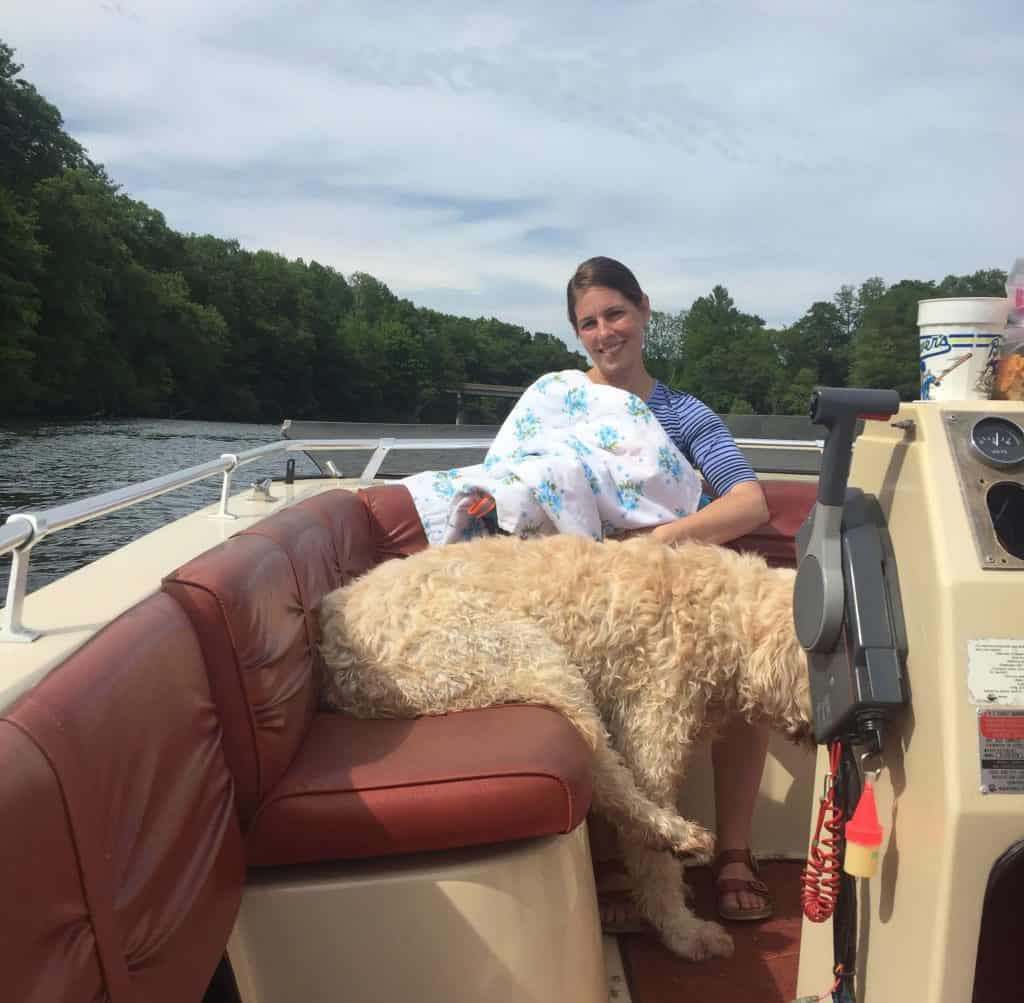
Some people are really nervous about breastfeeding in public. I’m here to tell you it gets easier with practice and you will care less and less as time goes on. No one has to see anything if you are modest. But in the end, if someone gets a little peek of your boob who cares? You’re feeding your baby and that’s your right!
My number one suggestion is to find a nursing cover you feel confident in. At first, I tried using blankets and nursing scarves but I couldn’t see my baby to help her latch. Finding a nursing cover that had the wire in it to hold out the neck made all the difference.
Think about your clothing before you go out the door:
Are you wearing clothing that is easily accessible to your breasts?
Do you have a shirt or tank top on underneath if you need to lift up your shirt so your back isn’t exposed?
Will your shirt keep falling down over the baby’s face? If yes, check out this handy shirt lifting hook.
One of the best purchases I’ve ever made was this sun tent for breastfeeding. In summer when we go to the beach I can raise up all the flaps inside the tent and then lift the opening to velcro it shut and I have complete privacy to breastfeed.
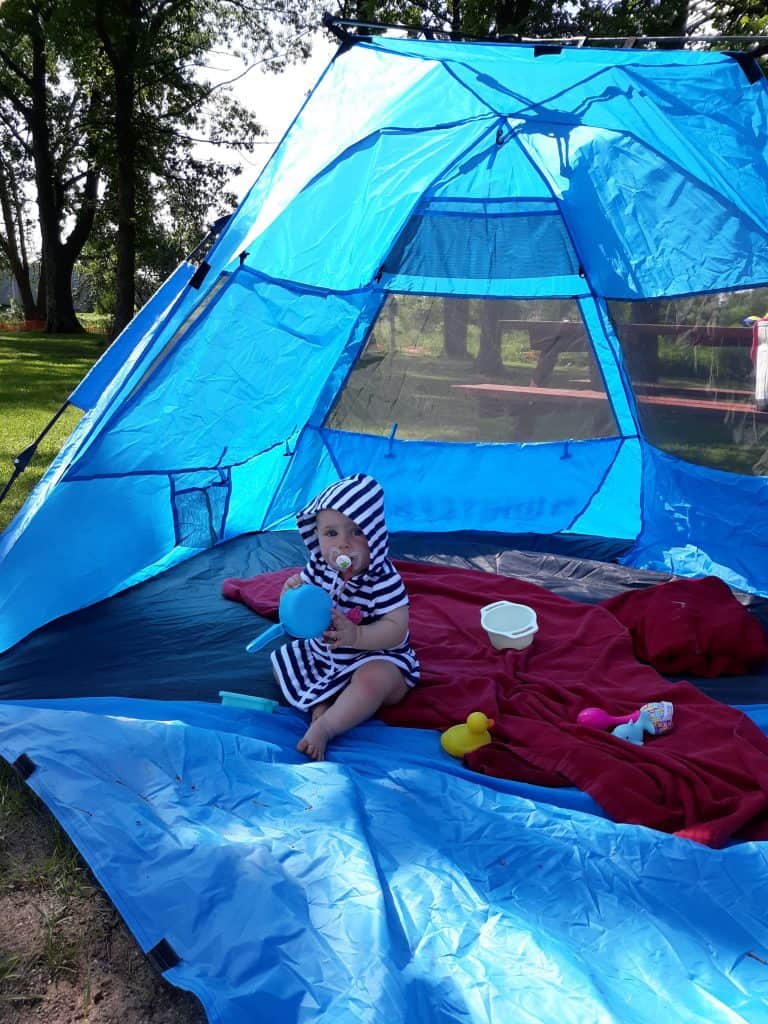
Pumping Tips
If you choose/are able to breastfeed, at some point, you will need or want to pump your breast milk. Maybe you will be returning to work after maternity leave. Maybe you will be sick at some point and will have to take a medication that shouldn’t be passed on to your baby through breast milk. Or maybe you will (and should!) take some time away from the baby.
Update: Get the Haaka! I wish I had had this amazing product with my first three babies. It catches all the letdown milk from the side you aren’t breastfeeding on. Build a freezer stash from day one!!
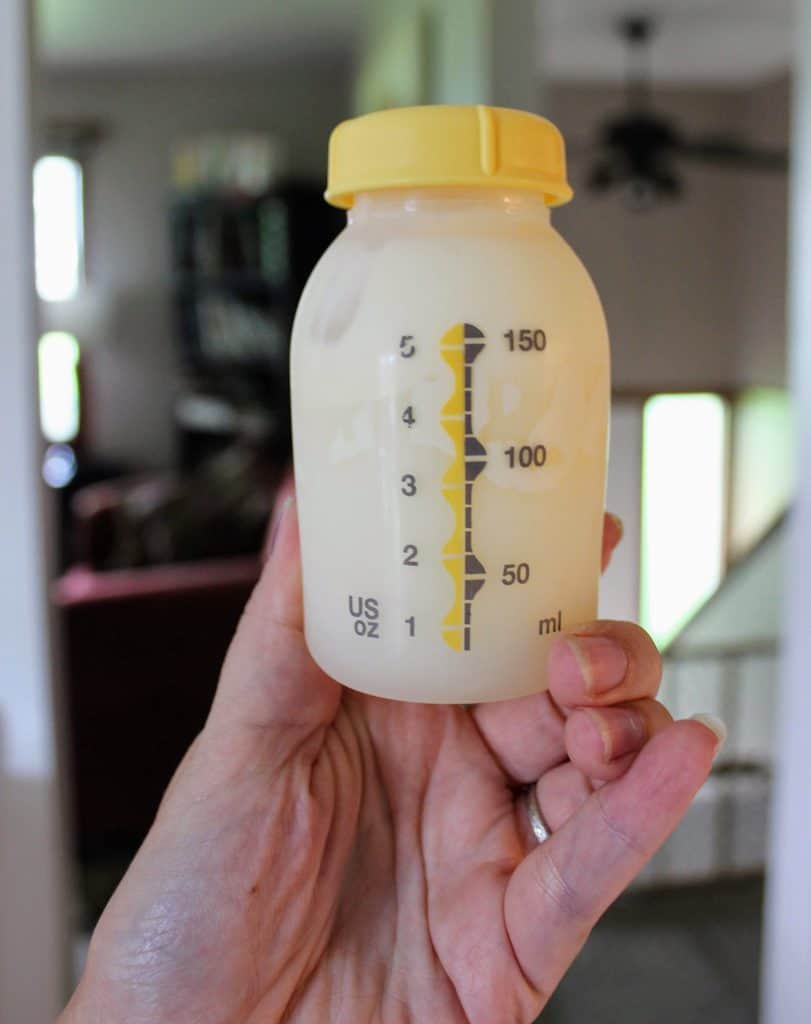
Pumping breastmilk to create a freezer stash will give you peace of mind that whatever happens there will be plenty of breastmilk to feed your baby.
To be honest, pumping sucks (ha – get it!). I really hated pumping but at least it never hurts. Thank goodness we do have this invention to allow some flexibility in our lives when we choose to breastfeed for so long.
Below are some tips I’ve picked up along the way that have helped me out;
- Make sure you have the correct flange size.
- Use the time pumping to do something enjoyable. For me, that’s reading on my Kindle. Others might like to watch an episode on Netflix or check social media. You’ll have twenty minutes during which you can’t move, might as well do something useful with your time.
- It doesn’t hurt to have backup supplies. I always have a bunch of membranes in case I lose or tear them plus you should be replacing them frequently. My tubes got moldy after a while and I replaced those too.
- Don’t watch the milk. Looking at how much (or how little) is in the bottles during a pumping session can stress a mom out. If you need to, cover the bottles with a shirt or blanket so you aren’t obsessing over your output. Remember, a baby is always better at removing milk than your machine. Don’t judge your milk production on how many ounces you get during a pumping session.
- Look at a picture of your baby. Letdown might happen a lot quicker if you are looking at a picture of your baby and thinking about how your baby smells. Visualization works for many things including breastmilk letdown.
- Hydrate, drink plenty of fluids (especially water) to help with milk flow. Keep a water bottle on you as much as you can.
- Eat or drink foods that promote milk production. Oatmeal and this tea were my go-to’s but there are many other types of food that increase milk production as well. There are tons of lactation recipes on Pinterest. Have a beer and you’ll be shocked!
- Learn when the best time to pump is. Many suggest that when your baby is born pump right after a feeding session. Others pump in the middle of the night or early in the morning when their supply is the best. Whenever pumping works for you that’s when you should fit it in. Just don’t go crazy with pumping because oversupply can become an issue. Remember if you are going back to work all the milk you pump at work will go towards feeding your baby too.
Storing Breastmilk
Once you’ve pumped your breastmilk you’ll want to store it efficiently.
1. Write the date, time, and how many ounces on the storage bag.
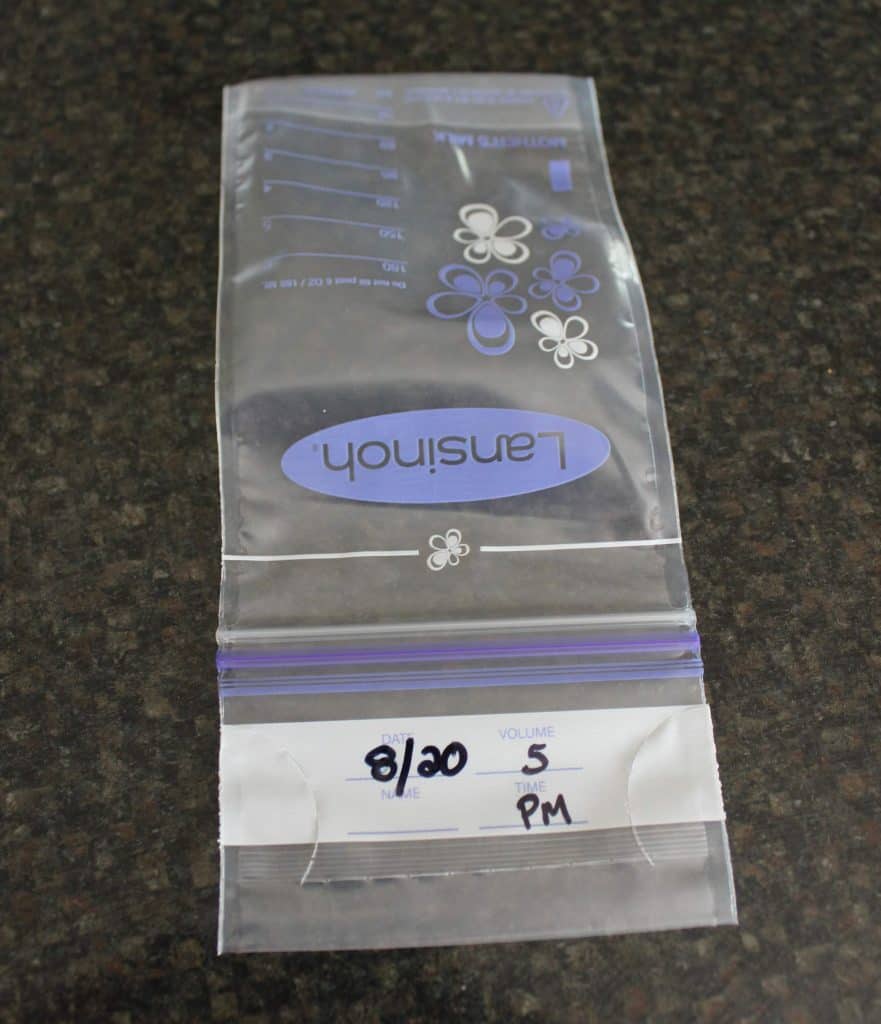
2. Use the flanges as funnels to pour the milk into the bag.
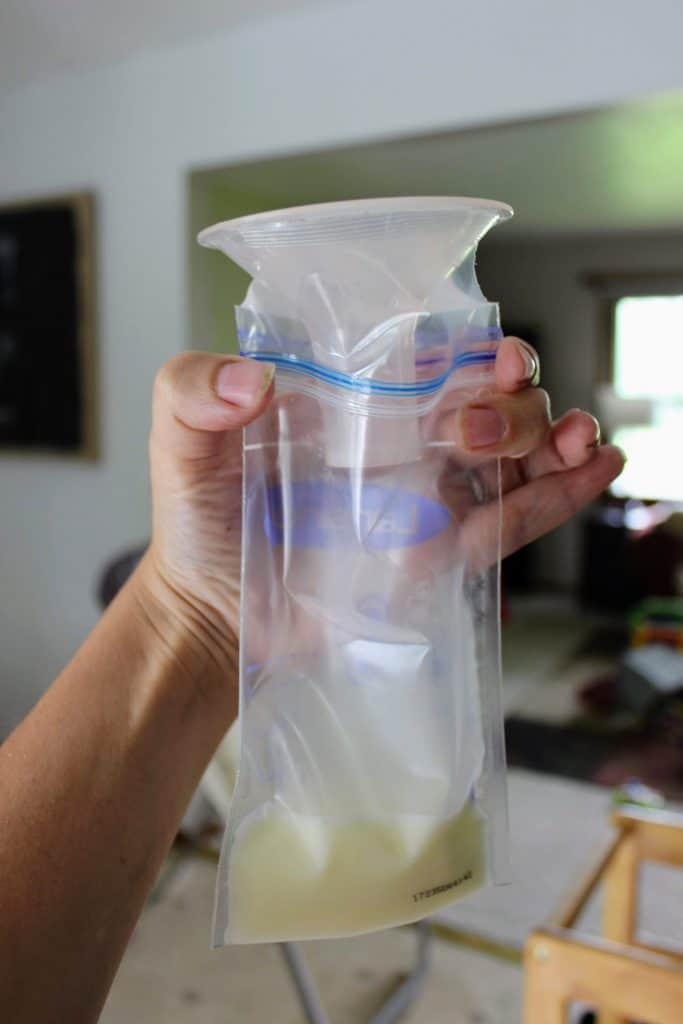
3. Hold the bag against a counter to squeeze the air out and seal.
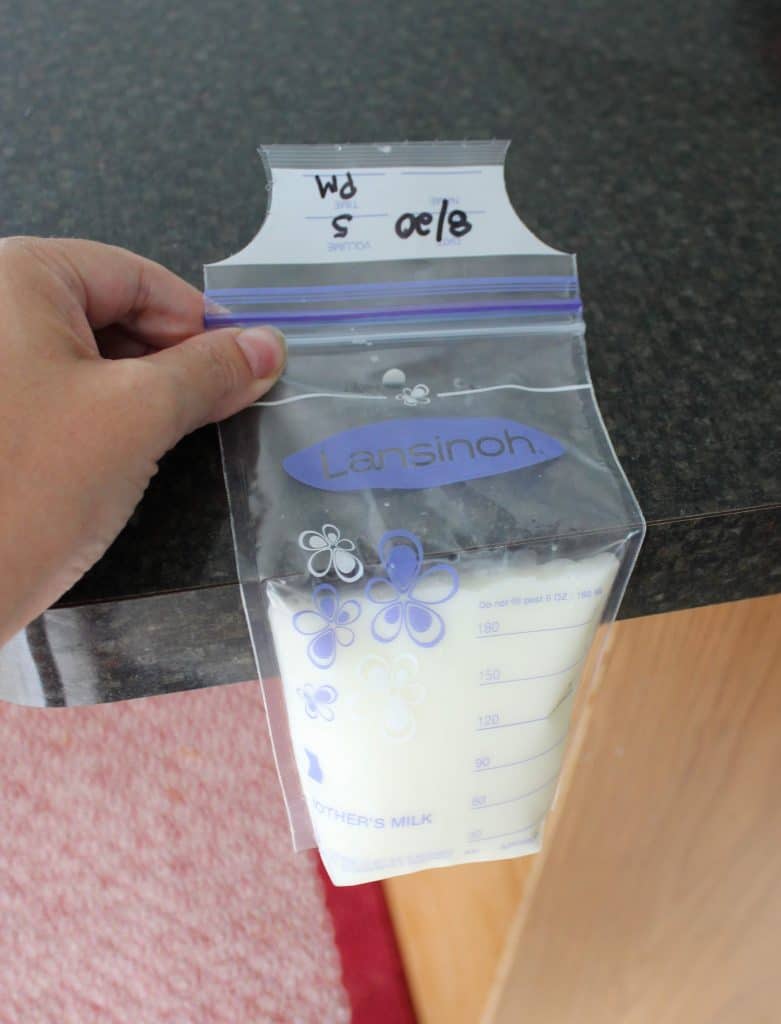
4. Lay the bag(s) flat on a shelf in the freezer door.
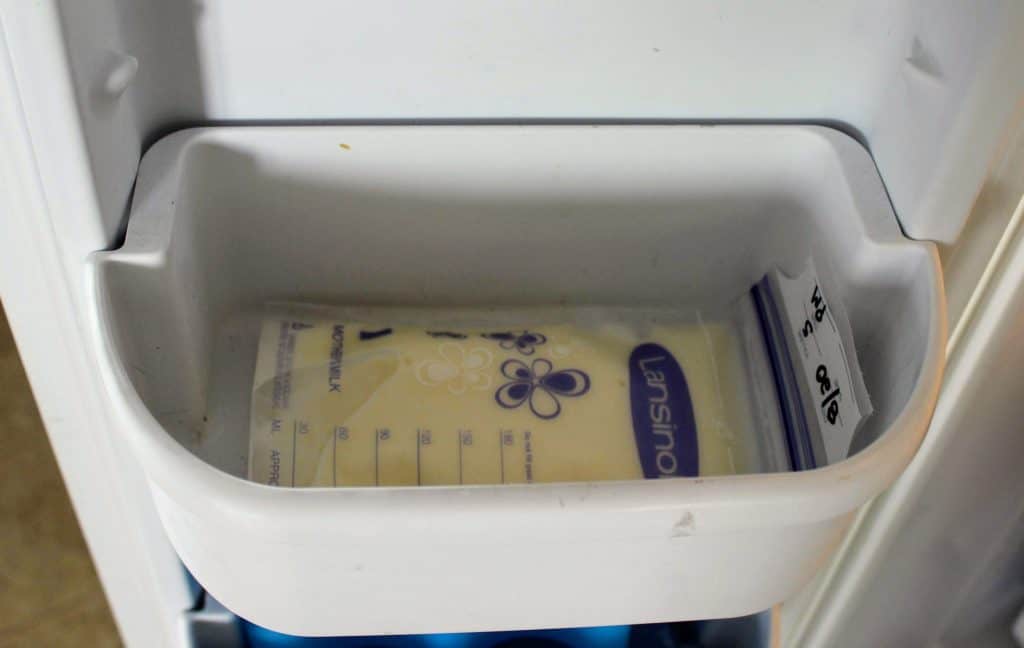
5. Once frozen, transfer the bag(s) to a gallon-sized bag by standing them up vertically in chronological order.
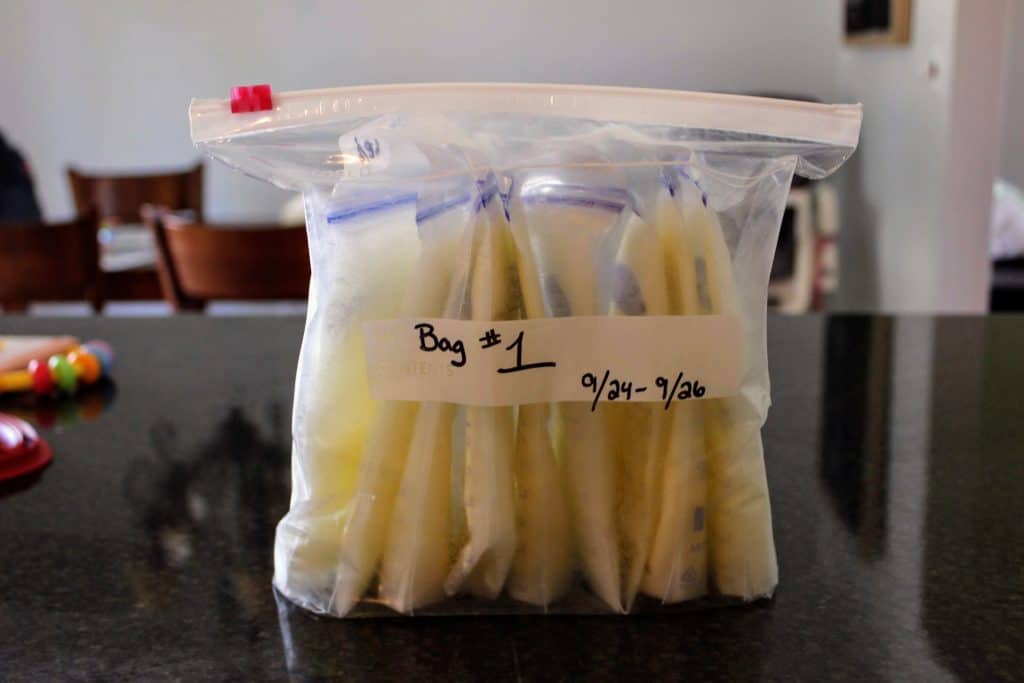
Traveling
I have only gone away from my babies on weekends when I was nursing. I don’t have any personal experience flying with milk or being away from my baby for long periods of time. But here is my advice for spending a weekend away.
Update: I’ve heard Milk Stork is amazing for shipping breast milk.
First of all, invest in a manual pump. You never know when you won’t be by an accessible outlet (or at least one that offers you some privacy). Plus, a manual pump is much easier to carry around.
Try to brainstorm ahead of time where and when you will pump. On a work trip, I used the Mamava app to find a lactation pod to pump in.
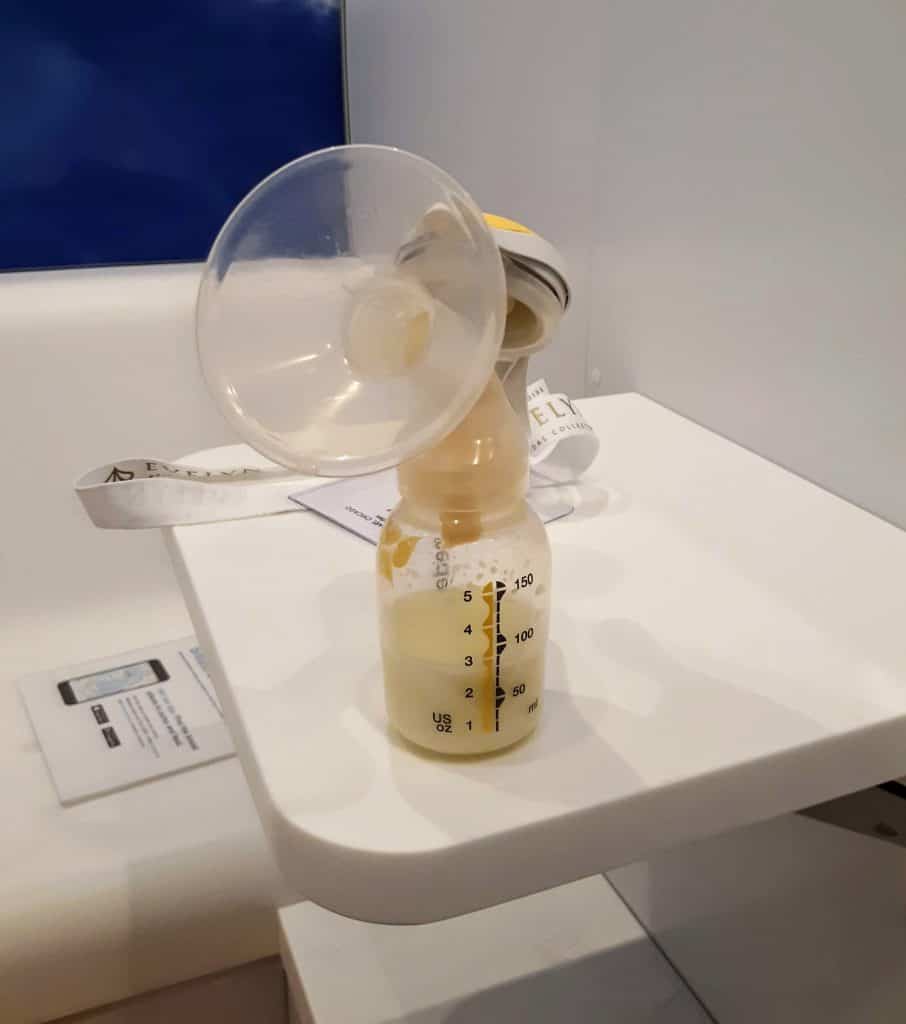
I use this small cooler on all my weekend travels away from my babies. It is the perfect size to hold a bunch of breastmilk storage bags (laying flat horizontally) with one or two small ice packs.
Remember to make sure your hotel room has a refrigerator for storing pumped breastmilk!
Giving Bottles
I am NOT an expert about giving bottles to breastfed babies. In fact, my kids really struggled to take bottles. Even my preemie who was exclusively given bottles for the first two months of his life started to refuse them once I was given the green light to breastfeed.
One suggestion – start giving your baby a bottle early and often if you know you will be spending some time away from him/her. I wish I would have started giving at least one bottle a day at three weeks of age but who knows if that would have really helped?
Also, try out different brands of bottles. We found that our babies much preferred the bottle brand that matched the pacifier brand we use.
When giving bottles of breastmilk I was always unsure of how much I should be putting in a bottle so I made a little chart to help me keep track.
Please note: Every baby is different! Make sure to consult with your pediatrician or a lactation consultant if you have concerns. Your baby’s weight growth chart will be a good indicator if your baby is getting the correct nutrition.
Here are resources that helped me with this chart. I recommend you visit the sites if you plan on bottle feeding your baby often;

Final Thoughts
For me, breastfeeding was totally worth it. My children’s immune systems were helped by the amazing antibodies and nutrition in my breastmilk. I bonded with my babies and had time every day to just hold them and watch them nurse. I feel fortunate to have been able to breastfeed for so long.
Breastfeeding and pumping is a lot of work. The benefits are numerous but I’m happy to be weaning and to finally be getting my body back.
I hope you have benefited from my breastfeeding and pumping tips.
For more recommendations on breastfeeding and bottle-feeding supplies read my baby registry guide to feeding supplies.
1 COMMENT
Leave A Comment
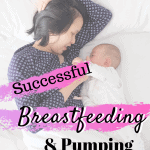



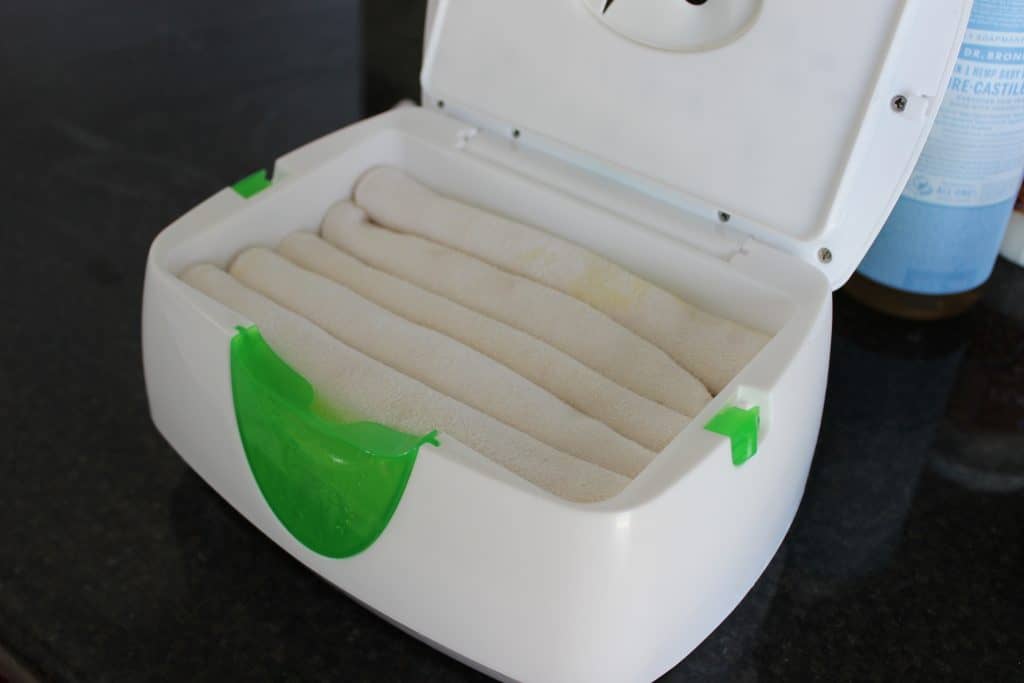

Gifts for New Moms - planningforkeeps.com | 15th May 20
[…] READ MORE: Amazing Breastfeeding and Pumping Tips […]